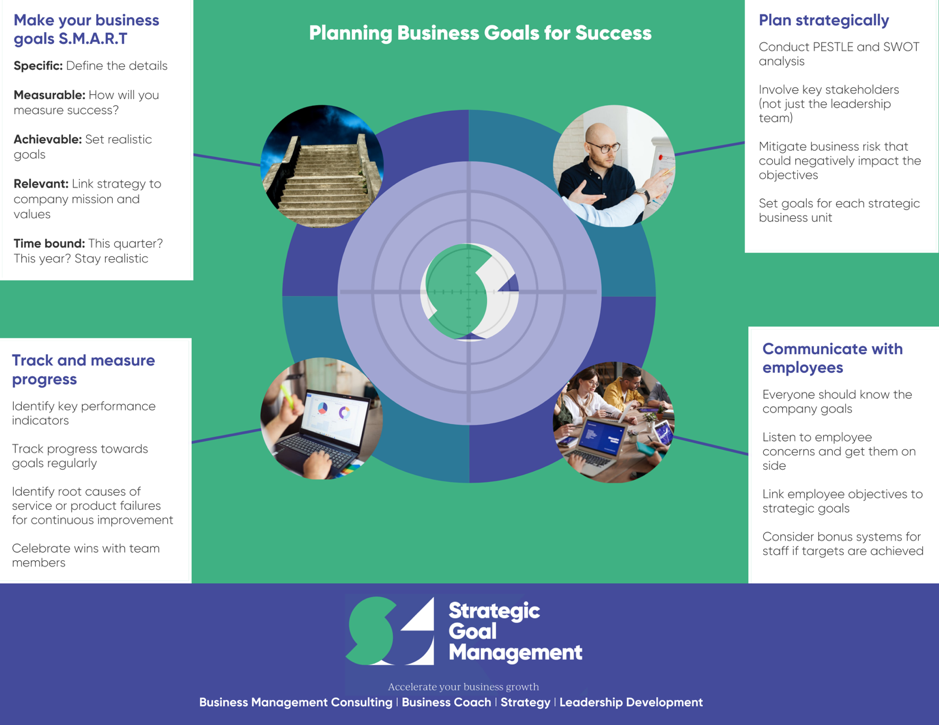Strategic Goals in Business
Strategic goals in business are essential; without them, employees will not understand what they are working towards. They may undertake work with no strategic value by triaging the business priorities as they see them.
95% of a company’s employees don’t understand its strategy.
According to the Harvard Business Review

Strategic Goal Setting
Clearly understood strategic goals can help an organisation’s employees focus on strategic activity that benefits the company and not just their department or business unit.
The remarkable statistic above emphasises the commonality that employees are unaware of or do not understand the bigger picture of what their organisations are trying to achieve. If employees do not understand the company strategy, how can their management decisions work towards the company goals
SMART Objectives
for Businesses
SMART objectives are commonly used in well-established organisations to define and set goals for individuals, teams, and the wider business.
Below is a breakdown of SMART objectives in more detail:
SMART Objectives should be used for setting strategic business goals
|
||
|
Specific |
The goal should be specific, and the desired target should be very clearly defined. Example:
|
|
|
|
Measurable |
Measurement is critical for reviewing if the objective has been hit. Monitoring the progress towards the objective can then be reviewed periodically. Example:
|
|
Achievable |
An objective should be achievable. Typically, they are designed to be challenging but still achievable. Managers and employees should agree upon objectives to ensure commitment to them. Example:
|
|
|
Relevant (or realistic) |
Because achievable and realistic are very similar, several organisations and scholars prefer to use relevant for the ‘R’ in SMART. Relevant can be used to link the objective with the company mission and values. The key question is, how does this objective serve our mission and values as a company? Example:
|
|
|
Time-bound |
A time frame should be set for each objective, which could be a year, three years or less. Strategic goals typically are longer term and will need to be monitored for progress towards the goal Example:
|
|
Objectives
for Employees
From experience as a line manager all the way up to the managing director level, I have seen how emotive the staff objective and appraisal process can be. However, when linking individual and departmental objectives to strategic business goals, the task is clearer and easier to manage.
Well-thought-out staff objectives should align with the company’s strategic goals, mission, and values. Managers and employees should agree upon objectives to ensure commitment to them.
How does this objective influence our strategic business goals is the question that should be repeated?
If a staff member requests a course for professional development. You should challenge them to articulate why and how it will influence the departmental and strategic goals. Moreover, expanding on this example linking each staff goal as a subordinate to a specific strategic goal makes complete sense.
The table below demonstrates how to link the strategic goals to individual staff member objectives.
|
Strategic Business Goals Company X |
Selected Employee Goals Company X |
|
Increase turnover by 15% to 10m in the year 2024 |
The Head of Operations Company X Mechanical and Electrical Dept will increase M&E turnover by 15% to £3.4m in 2024 |
|
Reduce customer complaints by 25% from 200 in 2023 to 150 in 2024 |
The Customer Service Director will conduct a root-cause analysis of 100% of complaints for continuous improvement. |
